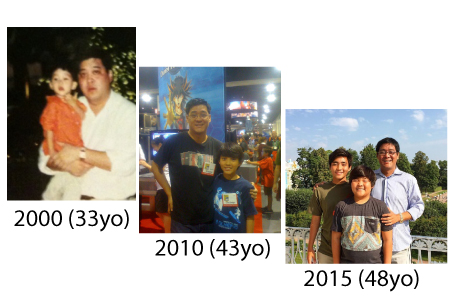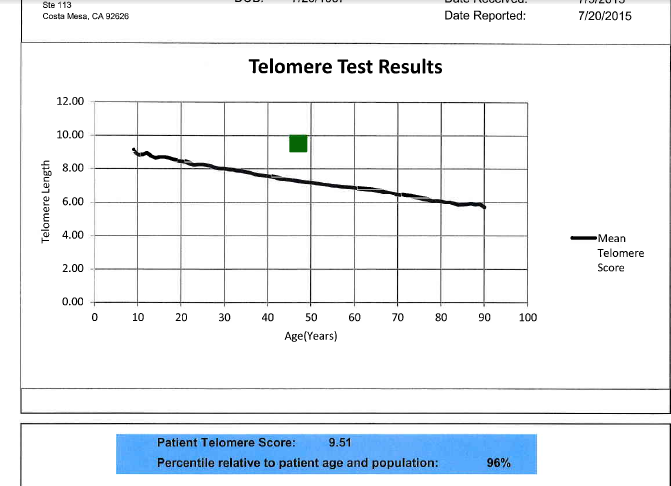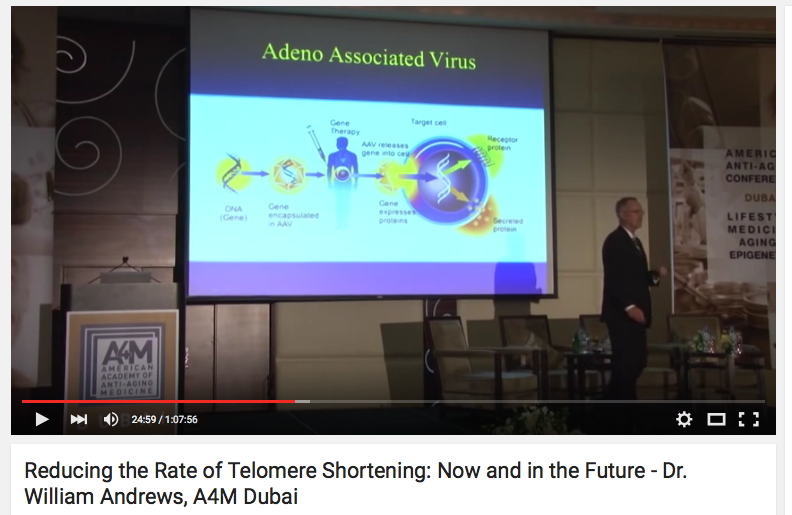- Written:
- Author: Edward
- Posted in: dr ed park, Telomere erosion
- Tags: aav, bill andrews, dr park, gene therapy, spectracell, telomere measurements, telomeres, transfection, zombie apocalypse
I think a lot about telomeres and every year, I face a mini-crisis when I measure my own. I know that if the measurements come back dramatically changed, I will be forced to consider stopping telomerase activators. In my clinical practice, I have seen changes although the nature of those changes can vary considerable depending on how much apoptosis occurs in OVERGROWN and senescent blood cells.
I feel younger, think I look younger, but you can’t be too careful when you are  potentially changing the behavior of such a critical cellular function.
potentially changing the behavior of such a critical cellular function.
After eight years of taking telomerase activators, I feel comfortable saying that my telomeres have not become freakishly long, and that is a good thing. Here is a report from SpectraCell showing I’m in their 96%ile, which is actually above the 50%ile for 10-year-olds.
I hav e also not grown abnormally long hairs, increased in weight or stature, or had a change in my appearance consistent with any Lon Cheney-like transformations. Presumably, eight years would have been enough time for those kinds of changes to manifest.
e also not grown abnormally long hairs, increased in weight or stature, or had a change in my appearance consistent with any Lon Cheney-like transformations. Presumably, eight years would have been enough time for those kinds of changes to manifest.
The reason this came up tonight is that a reader referred me to a video presentation done by Bill Andrews about gene therapy to enhance the copies of telomerase in cells.
While this is an interesting experiment using science that is well proven, we don’t know how this will influence the telomere maintenance and apoptosis of those cells. Remember that even a 50% gene dose as is present in many forms of progeria, will result in death by old age in the early teens.
I believe that if telomerase lengthens the telomeres too long, it confers no benefit and in fact presents a genetic copying burden to the cells. If the increased survival occurs in non-stem cells that have less perfect genomic sequences than highly error-correcting stem cells (the best example being the oocytes and spermatogonia) then you risk creating zombie immortal cells from already damaged lines.
The elegance of the existing system cannot be minimized. We are designed to have better “queen bee” stem cells that produce inferior, throwaway differentiated cells that do NOT generally activate telomerase. Once we start adding a third copy of telomerase to regular cells, will they outlive their master stem cells and exhibit zombie-like phenotypes that supersede the built-in obsolescence of the current Queen/drone system?
It seems to me that a temporary enhancement of the existing machinery with a controlled, mild effect is safest. I am grateful that I have not developed freakishly long telomeres nor cancer and in my mind, a more integrated approach to telomerase enhancement is the most prudent.
ERRATA: In the original posting, I incorrectly characterized this gene therapy, which is actually being conducted by BioViva outside the US, as inserting up to hundreds of copies. It would appear that the gene copy number and location is more predictable and precise and locates to Chromosome 19 in 1-4 copies generally.



